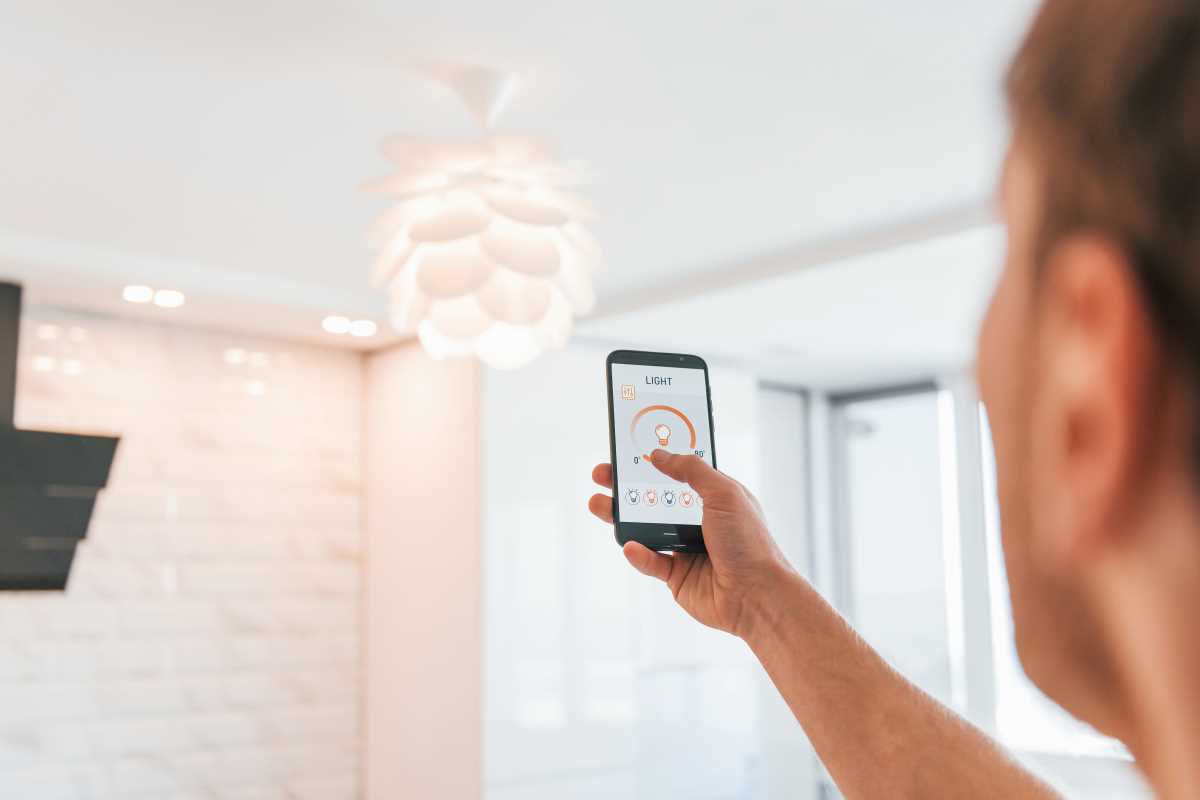Electricity costs are one of the major concerns for households, especially as energy prices continue to rise. Lighting accounts for a significant portion of electricity consumption, and finding ways to reduce lighting costs can help families save on their utility bills. One effective solution is the use of smart lighting systems. These lighting solutions, including smart bulbs, smart switches, and automated controls, offer convenience, energy savings, and cost reductions. In this article, we explore how smart lights can impact electricity costs and how they can help reduce energy usage at home.
What Are Smart Lights?
Smart lights are lighting systems that can be controlled remotely using smartphones, tablets, or voice-activated assistants like Amazon Alexa and Google Assistant. They work through Wi-Fi, Bluetooth, or Zigbee technology, allowing users to manage their lights from anywhere. Smart lights come in various forms, such as bulbs that fit traditional fixtures, smart light strips, and outdoor lighting. Features of these lights include adjustable brightness, color-changing capabilities, motion sensors, and the ability to schedule or automate lighting.
How Smart Lights Help Save Energy
Smart lighting systems can have a significant impact on energy consumption. Here’s how:
- Adjustable Brightness and Color Temperature: Traditional incandescent bulbs are often left on at full brightness, consuming unnecessary energy. Smart bulbs allow users to adjust brightness, lowering it when full illumination isn’t needed. Additionally, many smart lights allow you to adjust the color temperature. Cooler lights are great for activities that require focus, like working or reading, while warmer lights are more suitable for relaxation. By choosing the right brightness and color temperature, users can reduce energy use without sacrificing comfort.
- Automation and Scheduling: A major advantage of smart lights is automation. Lights can be set to turn on or off at specific times of the day or based on your schedule. For example, you can set your lights to turn off at bedtime or when you leave for work. Some smart lights can also be paired with motion sensors, ensuring that lights only turn on when a room is occupied. This reduces the likelihood of lights being left on in empty rooms, which helps lower energy consumption.
- Smart Home Integration: Smart lights can be integrated with other smart home devices, allowing for even greater energy savings. For example, linking your smart lighting system with a smart thermostat means that lights can be turned off when the house is empty or when the temperature is adjusted. By coordinating with other devices, smart lights can help reduce energy use more effectively than standalone systems.
The Financial Impact of Smart Lights
While the upfront cost of smart bulbs is higher than traditional incandescent or fluorescent options, the long-term savings can make them a more cost-effective choice.
- Lower Energy Consumption: Smart bulbs, particularly LED smart bulbs, are more energy-efficient than traditional lighting. LED bulbs consume up to 75% less energy compared to incandescent bulbs and last much longer. For example, an LED bulb may last up to 25,000 hours, compared to the 1,000-hour lifespan of a traditional incandescent bulb. This efficiency means lower electricity bills.
- Long-Term Savings: Even though smart bulbs are more expensive initially, their energy-saving benefits and longer lifespan make them a more cost-effective option over time. On average, replacing a traditional incandescent bulb with an LED smart bulb can save $6 to $10 per year. These savings can add up quickly if you replace multiple bulbs around the house.
- Smart Lighting for Entire Homes: The energy savings are even greater when smart lighting systems are used throughout the home. By replacing traditional bulbs in high-traffic areas like living rooms, kitchens, and hallways with smart bulbs, households can reduce overall electricity use. Since smart bulbs allow you to customize the lighting in each room, you can adjust your usage according to need, ensuring you’re not wasting energy.
Environmental Impact of Smart Lights
In addition to the financial savings, smart lights also offer environmental benefits. Using less energy helps to lower the overall electricity demand, which in turn reduces the environmental impact. Many power plants still rely on fossil fuels, so reducing energy consumption directly contributes to lowering carbon emissions.
Reducing Energy Waste: Smart lights help prevent unnecessary energy waste by allowing you to control when and how long lights are on. By turning off lights when not needed or adjusting their brightness, smart lights help lower household electricity consumption. This not only saves money but also reduces your carbon footprint.
Practical Ways to Save with Smart Lights
Here are some practical tips for maximizing savings with smart lighting:
- Set Up Schedules: Automate your lights to turn off when they’re not in use. For example, set your lights to turn off when you go to bed or during the day when you're away at work. Automating your lights ensures they’re never left on unnecessarily.
- Use Motion Sensors: Pair your smart lights with motion sensors to ensure they only turn on when someone is present in the room. This eliminates the risk of forgetting to turn off the lights and helps save energy in frequently used spaces like hallways and bathrooms.
- Use Lower Brightness in Certain Areas: Reduce brightness in rooms where high light levels aren’t necessary, like bedrooms or dining rooms. Adjusting the lighting in each room based on activity can help save electricity.
- Switch to LED Smart Bulbs: If you haven’t already, switch to LED smart bulbs. They use far less energy than traditional incandescent bulbs and last much longer. Over time, this switch will lead to noticeable reductions in your electricity bill.







